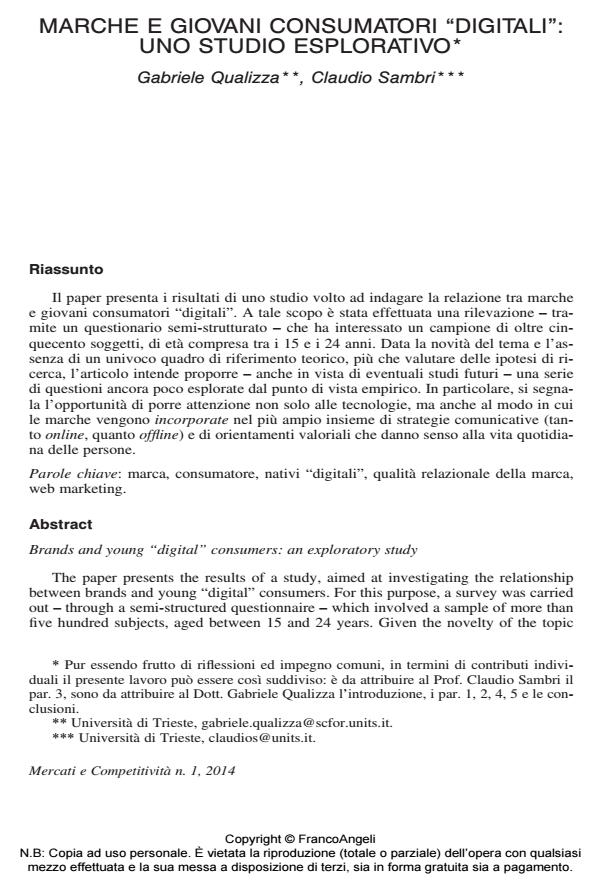Brands and young "digital" consumers: an exploratory study
Journal title MERCATI E COMPETITIVITÀ
Author/s Gabriele Qualizza, Claudio Sambri
Publishing Year 2014 Issue 2014/1
Language Italian Pages 24 P. 153-176 File size 735 KB
DOI 10.3280/MC2014-001008
DOI is like a bar code for intellectual property: to have more infomation
click here
Below, you can see the article first page
If you want to buy this article in PDF format, you can do it, following the instructions to buy download credits

FrancoAngeli is member of Publishers International Linking Association, Inc (PILA), a not-for-profit association which run the CrossRef service enabling links to and from online scholarly content.
The paper presents the results of a study, aimed at investigating the relationship between brands and young "digital" consumers. For this purpose, a survey was carried out - through a semi-structured questionnaire - which involved a sample of more than five hundred subjects, aged between 15 and 24 years. Given the novelty of the topic and the lack of a unique theoretical framework, rather than assessing some research hypotheses, the article intends to point out - also in view of possible future studies - a number of issues still little explored from an empirical point of view. In particular, it seems appropriate to pay attention not only to technology, but also to the way in which brands are incorporated into the largest set of communication strategies (both online and offline) and value orientations that give meaning to people’s everyday lives.
Keywords: Brand, consumer, "digital" natives, brand relationship quality, web marketing
- Destination management organizations (DMOs) and Digital Natives: the neglected “informal expertise” in web 2.0 implementation and social media presence. Insights from the Italian Friuli Venezia Giulia DMO Marika Gon, Harald Pechlaner, Francesco Marangon, in Information Technology & Tourism /2016 pp.435
DOI: 10.1007/s40558-016-0068-x - Exploring the palm oil crisis through the lens of different social media: an analysis of facebook, youtube and twitter contents Matteo Corciolani, Giacomo Gistri, Stefano Pace, in MERCATI & COMPETITIVITÀ 4/2016 pp.43
DOI: 10.3280/MC2016-004004
Gabriele Qualizza, Claudio Sambri, Marche e giovani consumatori "digitali": uno studio esplorativo in "MERCATI E COMPETITIVITÀ" 1/2014, pp 153-176, DOI: 10.3280/MC2014-001008